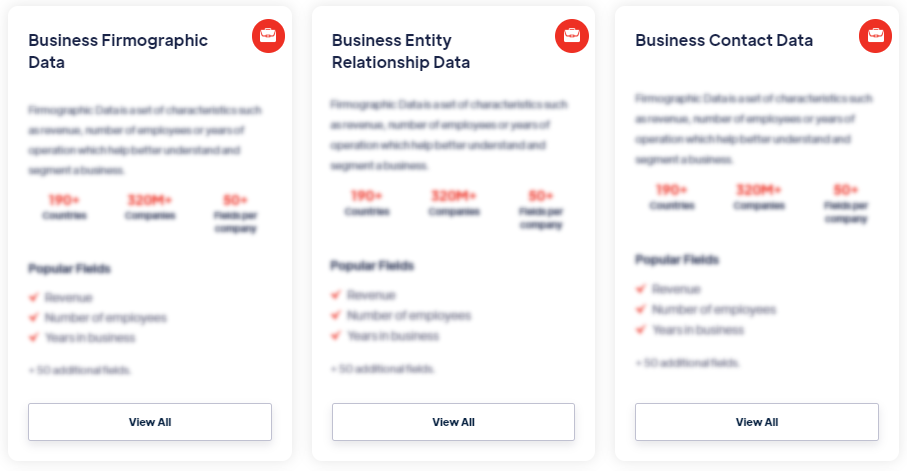Best
Shipping Container Tracking Data
Products
Shipping container tracking data refers to the information collected and recorded during the movement of shipping containers from the point of origin to the final destination. It includes details about the container's location, status, movement history, and other relevant information that helps track and monitor the container throughout its journey. Read more
Our Data Integrations


Request Data Sample for
Shipping Container Tracking Data

Browse the Data Marketplace

Frequently Asked Questions
1. What is Shipping Container Tracking Data?
Shipping container tracking data refers to the information
collected and recorded during the movement of shipping
containers from the point of origin to the final destination. It
includes details about the container's location, status,
movement history, and other relevant information that helps
track and monitor the container throughout its journey.
2. What Types of Information are Included in Shipping
Container Tracking Data?
Shipping container tracking data typically includes the
container number or identifier, which uniquely identifies the
container. It also includes the container's current
location, as well as historical location data that shows the
container's movement over time. Other information may
include the departure and arrival ports, estimated arrival and
departure times, vessel or transportation details, and any
updates or events related to the container's journey.
3. How is Shipping Container Tracking Data Collected?
Shipping container tracking data is collected through various
tracking systems and technologies. Many shipping carriers and
logistics providers utilize GPS (Global Positioning System) and
other tracking technologies embedded in the containers to
monitor their locations in real-time. Data can be collected
automatically through these tracking systems and transmitted to
central databases. Additionally, manual scans or updates may
occur at different checkpoints, such as ports or terminals,
where the container's information is recorded and updated
in the tracking system.
4. What is the Importance of Shipping Container Tracking
Data?
Shipping container tracking data plays a crucial role in supply
chain management and logistics operations. It provides
visibility and transparency into the whereabouts of containers,
allowing businesses to monitor and manage their inventory
effectively. By tracking containers in real-time, companies can
optimize their transportation routes, plan for efficient loading
and unloading, and ensure timely delivery of goods. It also
enables proactive management of any delays, damages, or
disruptions that may occur during transit.
5. How Can Shipping Container Tracking Data Benefit
Businesses?
Shipping container tracking data offers several benefits to
businesses involved in shipping and logistics. It helps improve
operational efficiency by providing accurate information about
container locations, enabling better coordination of resources
and reducing delays. With real-time tracking data, businesses
can proactively address any issues or disruptions, minimizing
the impact on delivery schedules. It also enhances customer
satisfaction by providing visibility and transparency into the
status of shipments, allowing businesses to provide accurate
updates to customers regarding the estimated arrival times of
their goods.
6. How Can Shipping Container Tracking Data be Accessed?
Access to shipping container tracking data can vary depending
on the shipping carrier, logistics provider, or tracking system
used. In many cases, businesses can access container tracking
information through online platforms or portals provided by the
carrier or logistics company. These platforms typically require
the container number or tracking ID to retrieve the relevant
information. Some carriers also offer APIs (Application
Programming Interfaces) that allow businesses to integrate
tracking data directly into their own systems.
7. How is Shipping Container Tracking Data Used in Business
Operations?
Shipping container tracking data is used extensively in supply
chain management and logistics operations. Businesses use this
data to track and monitor the movement of containers, manage
inventory levels, plan for efficient transportation routes, and
ensure timely delivery of goods. It helps businesses make
informed decisions about resource allocation, optimize
operational processes, and improve overall supply chain
visibility. Additionally, shipping container tracking data can
be analyzed to identify trends, measure performance metrics, and
identify areas for improvement in logistics operations.
â€
